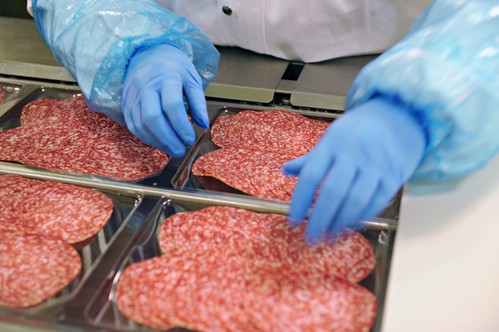Editor’s Note: This content was last updated 3/14/24.
In recent years, the organic market in the United States has experienced unprecedented growth, reshaping consumer preferences and challenging food processing plants to prioritize safety and quality. With organic products now pervasive in grocery stores nationwide, the need to adapt processing methods to meet these evolving demands has become paramount. This article explores the intersection of this organic surge with the imperative for food safety and innovation within processing facilities. We’ll uncover the critical role of heat treatment equipment, regulatory compliance, and proactive measures in shaping the future of food production.
The Surge of Organic Products
Within food processing facilities, a profound focus is placed on crafting wholesome, nutritious, and safe offerings for consumers. Over the past decade, the organic market in the United States has experienced an exponential ascent, driven by a growing consumer appetite for healthier choices. According to the U.S. Department of Agriculture’s Economic Research Service, organic products now grace the shelves of approximately 20,000 natural food stores and three of four standard grocery stores. Notably, in 2022, organic sales accounted for 6 percent of total food sales in the nation. With the demand for organics continuing to climb, it becomes imperative for food processing plants to prioritize the production of safe, healthy, and nourishing products.
The 2010 USDA Dietary Guidelines Committee defines processed foods as any alterations from raw agricultural commodities, encompassing most prepackaged or canned items. These foods typically undergo chemical or mechanical operations to extend their shelf life and maintain safety standards. As organic foods increasingly infiltrate the American diet, producing safer food through canning, drying, freezing, or self-curing is paramount.
Harnessing the Power of Heat
Central to these processing methods is heat—a critical step in eradicating harmful microbes and deactivating plant enzymes that contribute to food spoilage. Food processing facilities rely on heat treatment equipment, such as shell and tube heat exchangers, to achieve these objectives. However, striking a balance between microbial elimination and preserving taste and texture is crucial. Improper heating can lead to a significant loss of nutritional value, compromising the very essence of why people consume food. Shell and tube heat exchangers are vital for keeping the maximum nutrients in a food product without allowing harmful bacteria to grow.
Creating Safer Products
According to the U.S. Food and Drug Administration, the agency enforces food processing facilities to have a control plan if they handle any one of the eight major food allergens. These products include fish, shellfish, milk, eggs, soybeans, tree nuts, peanuts, and wheat.
To create the maximum level of safety in processing plants, facilities must then address six key issues:
Training and supervision to ensure all facility employees are up to date on hygiene and contamination issues.
Separating food items in storage and handling processes to limit cross-contamination in other food products in the facility.
Updating cleaning procedures so equipment is completely fit for food processing.
Acknowledging all cross-contamination issues within the facility to ensure products are handled in appropriate areas.
Making sure all items are properly labeled with appropriate allergens or USDA guidelines.
Implementing a supplier control program to ensure all ingredients are properly labeled on the food item.
In tandem with stringent regulations and comprehensive control plans, processing facilities can ensure that the products reaching our tables satisfy our palates and safeguard our health. As the food industry evolves, the quest for safer, more efficient equipment remains paramount in creating a healthier and more secure food supply chain for all.
If you’re in the market for stock or custom heat exchangers, we invite you to contact us or request a quote today.

